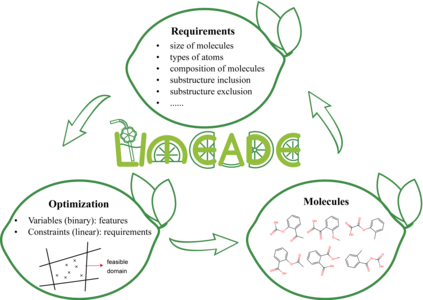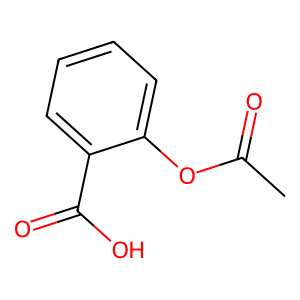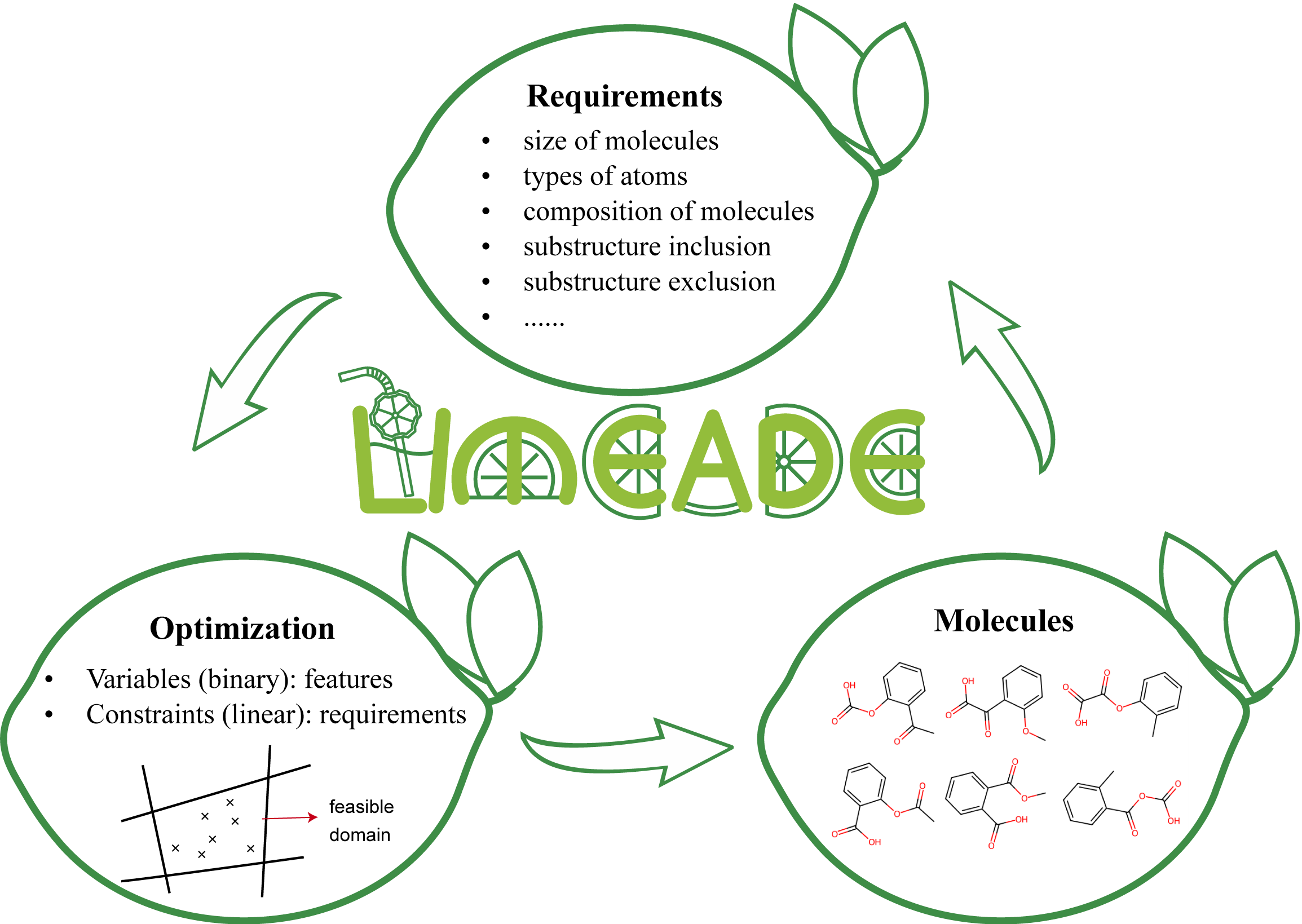Mixed-integer programming (MIP) is a well-established framework for computer-aided molecular design (CAMD). By precisely encoding the molecular space and score functions, e.g., a graph neural network, the molecular design problem is represented and solved as an optimization problem, the solution of which corresponds to a molecule with optimal score. However, both the extremely large search space and complicated scoring process limit the use of MIP-based CAMD to specific and tiny problems. Moreover, optimal molecule may not be meaningful in practice if scores are imperfect. Instead of pursuing optimality, this paper exploits the ability of MIP in molecular generation and proposes Limeade as an end-to-end tool from real-world needs to feasible molecules. Beyond the basic constraints for structural feasibility, Limeade supports inclusion and exclusion of SMARTS patterns, automating the process of interpreting and formulating chemical requirements to mathematical constraints.
翻译:暂无翻译










